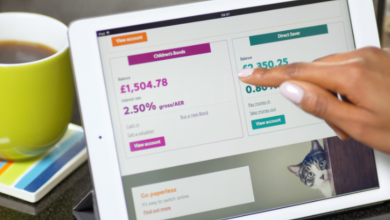Selling on Consignment: How Do You Protect Your Products and Profits? – FangWallet

This article may contain references to products or services from one or more of our advertisers or partners. We may receive compensation when you click on links to those products or services. Nonetheless, our opinions are our own.
Key Highlights
- Consignment is an effective way to explore new markets and reach new customers with minimal risk.
- Choose a consignment partner experienced in selling similar products.
- Negotiate fair commission rates and straightforward payment terms.
- Safeguard profits by accounting for costs like shipping and insurance.
- Effective inventory management ensures you track consigned items and sales accurately.
Introduction
Consignment offers a low-risk opportunity to expand your market reach and gain product exposure. In this model, the consignor (product owner) retains ownership while the consignee (seller) manages sales. This collaboration allows you to access new audiences and test product demand without the upfront costs of traditional retail. However, protecting your products and maximizing profits requires strategic planning and management.
Understanding Consignment: A Primer
A consignment is a partnership in which the consignor provides products for sale to the consignee. Ownership remains with the consignor until the items are sold. The consignee takes a commission from each sale, which typically ranges from 20% to 60%, depending on the product type and market demand. This arrangement benefits both parties: the consignor gains exposure without opening a store, and the consignee expands their inventory without upfront costs.
Key Roles:
- Consignor: Supplies high-quality products, ensures proper documentation, and retains ownership until sale.
- Consignee: Manages inventory, displays products effectively, and facilitates sales.
Preparing for Consignment: What You Need to Know
Before entering a consignment agreement, evaluate whether this model aligns with your business goals. It’s crucial to understand the potential risks and benefits, create clear agreements, and maintain strong communication with your consignee.
Evaluating If Consignment Is Right for Your Business
Consignment is ideal for:
- Small businesses seeking to test new markets.
- Entrepreneurs wanting to reduce upfront costs.
- Businesses with unique or niche products.
Pros:
- Low financial risk.
- Increased market exposure.
- Opportunity for customer feedback on new products.
Cons:
- Lower profit margins due to shared commissions.
- Potential delays in payment.
- Risk of unsold or damaged items.
Required Documentation and Agreements
A detailed consignment agreement ensures clarity and protects both parties. Key components include:
- Commission Rates: Specify the percentage the consignee will retain.
- Payment Terms: State when and how payments will be made (e.g., monthly or after each sale).
- Ownership and Liability: Clarify responsibility for lost, damaged, or unsold items.
- Duration of Agreement: Define the time frame for the consignment arrangement.
- Inventory Updates: Require regular sales and inventory reports.
Beginner’s Guide to Setting Up Your Consignment Business
Starting a consignment business involves understanding your target market, selecting the right consignees, and preparing your products for display. A strategic approach helps build strong partnerships and ensures success.
Identifying Your Market and Products for Consignment
Research your audience and choose products that align with their preferences. Popular consignment items include:
- Clothing and accessories
- Artwork and home decor
- Vintage furniture and collectibles
Finding the Right Consignee: Tips and Strategies
Select consignees whose brand and customer base align with your products. Evaluate potential consignees by:
- Visiting their store or website to assess product presentation.
- Asking about their terms, commission rates, and sales processes.
- Checking reviews and testimonials from other consignors.
Step-by-Step Guide to Selling on Consignment
Step 1: Crafting a Comprehensive Consignment Agreement
Your agreement should:
- Outline commission rates and payment schedules.
- Specify item pricing and sale terms.
- Include provisions for unsold, damaged, or lost items.
A clear agreement builds trust and minimizes disputes.
Step 2: Preparing Your Products for Consignment
Ensure products are:
- Clean, well-maintained, and ready for display.
- Properly labeled with descriptions and prices.
Organize inventory systematically to track stock levels and quickly replenish popular items.
Step 3: Pricing Strategies for Your Consignment Items
Price items competitively while factoring in:
- Market demand and trends.
- Condition, brand, and uniqueness.
- Consignee’s commission rates.
Review pricing regularly and adjust based on sales performance and feedback.
Step 4: Managing Inventory and Tracking Sales
Use tools like spreadsheets or inventory management software to:
- Record item descriptions, prices, and consignment dates.
- Monitor sales and identify top-performing products.
- Track unsold items and arrange for returns or redistribution.
Protecting Your Products and Profits
To safeguard your consignment business:
- Maintain strong communication with consignees.
- Conduct regular inventory checks.
- Consider insurance to cover theft, loss, or damage.
Ensuring Product Safety and Quality Control
Inspect each item before consignment to ensure it meets safety standards and is free from defects. Provide care instructions for delicate items to help consignees handle and display them properly.
Financial Protections: Insurance and Payment Terms
Secure insurance to protect against unforeseen losses. Clearly outline payment terms in the agreement, including commission rates and payment schedules, to ensure smooth financial transactions.
Conclusion
Selling on consignment can be a profitable and low-risk way to expand your business when managed effectively. By understanding the roles of consignors and consignees, creating clear agreements, and maintaining strong communication, you can protect your products and maximize profits. Whether you’re new to consignment or looking to optimize your strategy, a well-organized approach ensures success in this dynamic business model.
Frequently Asked Questions
What Are the Most Common Products Sold on Consignment?
Popular items include clothing, accessories, artwork, furniture, and collectibles. Unique and niche products also perform well in consignment arrangements.
How Does Selling on Consignment Differ from Traditional Selling Methods?
In consignment, the consignor retains ownership of products until sold, while the consignee manages sales and keeps a commission. Traditional selling typically involves the seller owning and managing inventory directly.
How Can a Seller Protect Their Products While on Consignment?
Use detailed consignment agreements, maintain product quality, and consider insurance to safeguard against theft, loss, or damage.
What Measures Can Be Taken to Maximize Profits When Selling on Consignment?
Set competitive prices, track sales closely, and communicate openly with the consignee. Regularly review performance to identify and address areas for improvement.

Reviewed and edited by Albert Fang.
See a typo or want to suggest an edit/revision to the content? Use the comment form below for feedback.
At FangWallet, we value editorial integrity and open collaboration in curating quality content for readers to enjoy. Much appreciated for the assist.
Did you like our article and find it insightful? We encourage sharing the article link with family and friends to benefit as well – better yet, sharing on social media. Thank you for the support! 🍉
Article Title: Selling on Consignment: How Do You Protect Your Products and Profits?
https://fangwallet.com/2025/01/17/selling-on-consignment/The FangWallet Promise
FangWallet is an editorially independent resource – founded on breaking down challenging financial concepts for anyone to understand since 2014. While we adhere to editorial integrity, note that this post may contain references to products from our partners.
The FangWallet promise is always to have your best interest in mind and be transparent and honest about the financial picture.
Become an Insider
Editorial Disclaimer: The editorial content on this page is not provided by any of the companies mentioned. The opinions expressed here are the author’s alone.
The content of this website is for informational purposes only and does not represent investment advice, or an offer or solicitation to buy or sell any security, investment, or product. Investors are encouraged to do their own due diligence, and, if necessary, consult professional advising before making any investment decisions. Investing involves a high degree of risk, and financial losses may occur including the potential loss of principal.
Advertiser Disclosure: This article may contain references to products or services from one or more of our advertisers or partners. We may receive compensation when you click on links to those products or services.
Source: Selling on Consignment: How Do You Protect Your Products and Profits? – FangWallet




